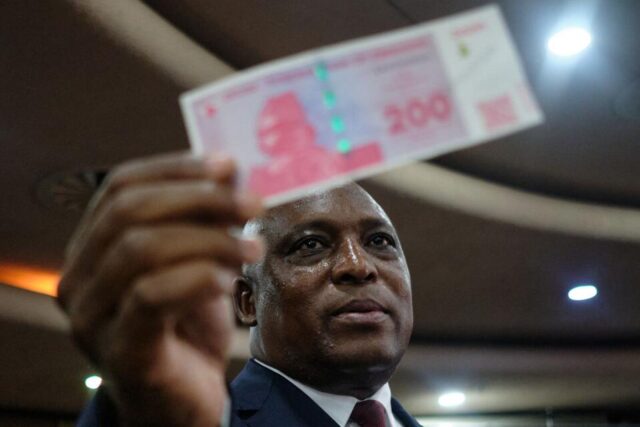Zimbabwe’s newly introduced ZiG currency is causing market disruptions and transaction bottlenecks despite central bank assurances that it is backed by gold and foreign currency reserves, amid scepticism that the government will keep money printing limited.
ZIMBABWE’S newly introduced ZiG currency is causing market disruptions and transaction bottlenecks despite central bank assurances that it is backed by gold and foreign currency reserves, amid scepticism that the government will keep money printing limited.
A raft of currency reforms and other measures have failed to turn around the Zimbabwean economy for the better in more than 10 years, with hyperinflation worsening, production crippled and the US dollar remaining the preferred unit of exchange.
In 2016, Zimbabwe introduced bond notes that were said to be backed by a bond held with Afreximbank before the country reverted back to Zimbabwe dollars in 2019, a year that also saw multiple currencies legalised as legal tender.
In 2023, President Emerson Mnangagwa, wobbled by an implosion in the exchange rate for the local currency, introduced digital gold coins to try to fight rampaging hyper-inflation, but trade in these has been minimal.
Now, the new Reserve Bank of Zimbabwe governor, John Mushayanhu, has introduced the ZiG as the new local medium of exchange, launching the new notes and coins on Friday and saying these will come into circulation on April 30. However, the electronic version of the ZiG will be operationalised this week.
Some economists are however sceptical that the new Zimbabwean currency will yield any respite for an economy struggling with hyper-inflation. Economics professor Gift Mugano said on Saturday that the new “ZiG currency will fail dismally”.
“We want a functioning currency so that we can generate savings, investments, pensions and build a prosperous economy,” he said.
Mugano added that Zimbabwe’s money merry-go-round over the years has always been dogged by “disagreements clearly drawn on political lines”.
Other financial experts believe that this is worsened by a lack of public confidence in the country’s currency strategies, a factor that has been exhibited through rejection of the Zimbabwe dollar in preference for the US dollar.
The apprehension over the ZiG currency and market uncertainties related to the introduction of a new currency tipped Zimbabwe’s economy into transaction disruptions as traders rejected the Zimbabwe dollar, which according to the central bank is still legal tender for the next three weeks.
Finance institutions and mobile money platforms had also suspended trade in the local currency, ushering the Zimbabwe economy into exclusive US dollar trading over the weekend and into the beginning of this week.
The ZiG’s value will be determined by the ruling spot exchange rate or gold, said the government, with the exchange rate for the new currency said to freely float in line with bullion prices. All local bank balances will also be converted from Zimbabwe dollar to ZiG.
“Zimbabwe market stability will require fiscal discipline, re-engagement with key lenders, and economic shock absorption for example in light of the drought. This will bridge the confidence gap, not pictures of gold bars,” said Chiedza Madzima, the head of operational risk and Africa research at Fitch Solutions.
In his first Monetary Policy Statement as governor of the Zimbabwean central bank, Mushayavanhu said on Friday that the RBZ was “recalibrating its monetary policy framework to re-anchor price and exchange rate stability and to boost confidence” in the local currency.
“The recalibrated monetary policy stance will be supported by strong macroeconomic fundamentals as attested by the continued favourable balance of payments, fiscal stability, optimal money supply management, and a safe and sound banking sector,” said Mushayavanhu.
In 2023, Zimbabwe generated $11 billion (R206bn) in foreign currency receipts, which was lower than the $11.4bn received in 2022. The country’s foreign currency receipts for January and February 2024 amounted to $2.2bn compared with $1.8bn in 2023.
Other economists have been supportive of the new currency measures, with Zimbabwe monetary policy committee member Persistence Gwanyanya saying the new ZiG currency is an opportunity for the monetary authority to correct its mistakes over the past years.
“I am confident because the monetary policy has strong backing of the executive and everyone in government. It is all about improving; we know better now and with hindsight we have been given opportunity to correct mistakes,” said Gwanyanya.
Zimbabwe’s central bank has previously dabbled in quasi fiscal activities such as funding government programmes while economists say it undertook excessive money printing which ballooned inflation. The central bank was also allocating foreign currency to importers and maintained a tight control on the exchange rate.
– BUSINESS REPORT








